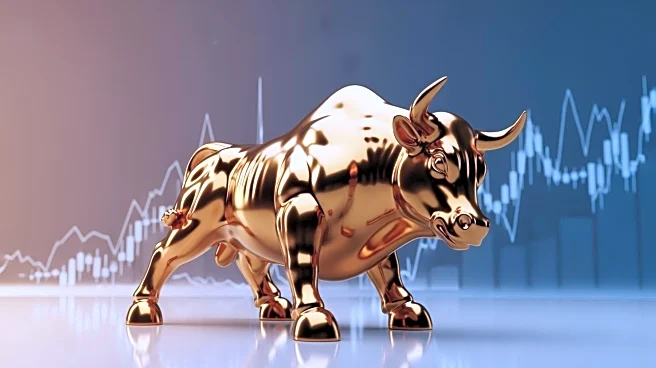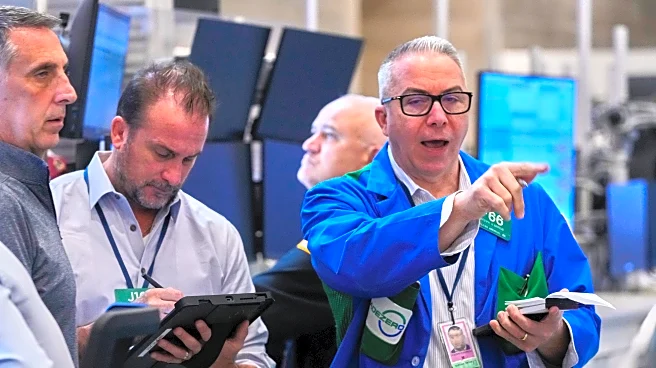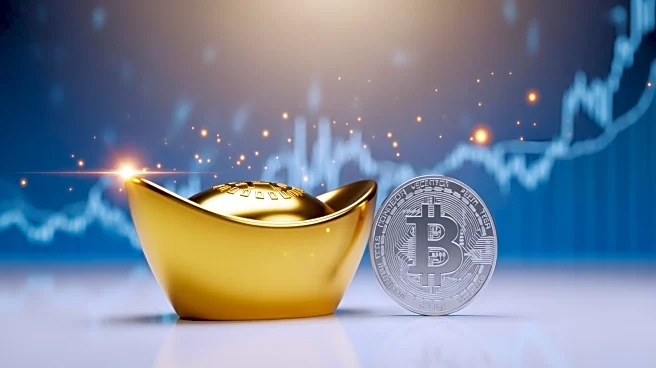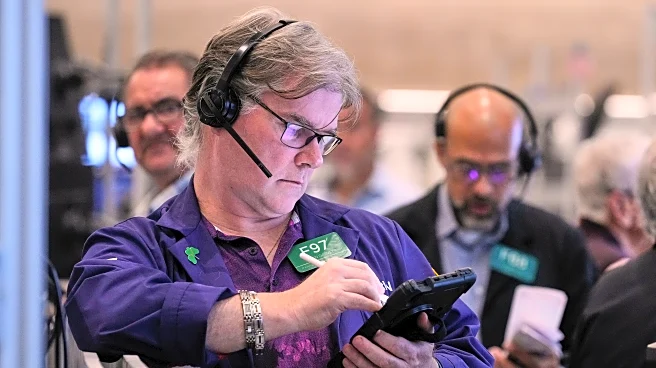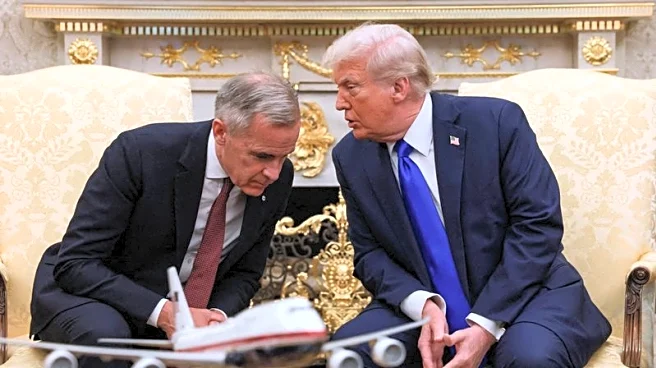What's Happening?
Gold prices have reached unprecedented levels in 2025, surpassing $4,000 per ounce for the first time. The surge was driven by a combination of factors including economic uncertainties, geopolitical tensions, and expectations of Federal Reserve rate cuts.
On October 20, gold hit an all-time high of $4,381 per ounce, marking a 60% increase for the year. However, prices have since dipped slightly, settling around $4,060 per ounce due to profit-taking and hopes for easing geopolitical tensions. The rally has been fueled by safe-haven buying as investors seek protection against inflation, recession fears, and global conflicts. Central banks have also contributed to the demand by stockpiling gold, with China increasing its reserves for 11 consecutive months. Additionally, gold-backed ETFs have seen record inflows, further supporting the metal's price.
Why It's Important?
The surge in gold prices highlights the growing economic and geopolitical uncertainties facing the global market. As a traditional safe-haven asset, gold's rise reflects investor concerns over inflation, potential recessions, and geopolitical conflicts such as the ongoing war in Ukraine and tensions in the Middle East. The increased demand from central banks indicates a shift away from reliance on the U.S. dollar, suggesting a broader trend of de-dollarization. This could have significant implications for global financial stability and currency markets. Furthermore, the rally in gold prices has impacted related sectors, with gold mining stocks and ETFs experiencing substantial gains. However, the recent price correction serves as a reminder of the volatility inherent in commodity markets.
What's Next?
Looking ahead, the trajectory of gold prices will likely depend on several factors, including Federal Reserve policy decisions, U.S.-China trade negotiations, and the evolution of geopolitical tensions. Analysts are divided on the future direction of gold prices, with some predicting further increases while others caution about potential pullbacks. The Federal Reserve's upcoming rate decision could influence gold's attractiveness as an investment, as lower interest rates typically support non-yielding assets like gold. Additionally, any developments in U.S.-China trade talks could impact investor sentiment and safe-haven demand. As the year progresses, market participants will closely monitor these factors to gauge the sustainability of gold's rally.
Beyond the Headlines
The current gold market dynamics underscore a deeper loss of confidence in traditional financial systems and currencies. The shift towards gold as a core portfolio holding reflects broader concerns about economic stability and the effectiveness of monetary policy. This trend may lead to long-term changes in investment strategies, with gold playing a more prominent role as a hedge against systemic risks. The de-dollarization efforts by central banks could also signal a shift in global economic power dynamics, potentially affecting international trade and financial relations. As gold continues to attract attention, its role as a safe-haven asset may evolve, influencing both individual and institutional investment decisions.


